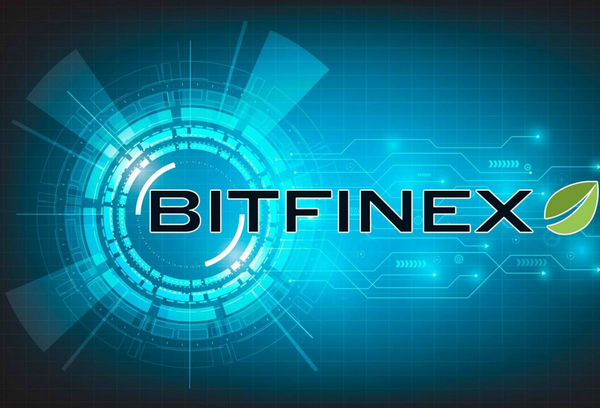-
 Bitcoin
Bitcoin $84,380.9629
-0.68% -
 Ethereum
Ethereum $1,587.8040
0.39% -
 Tether USDt
Tether USDt $0.9997
0.02% -
 XRP
XRP $2.0611
-0.10% -
 BNB
BNB $592.1695
0.41% -
 Solana
Solana $134.0171
-0.42% -
 USDC
USDC $1.0000
0.00% -
 Dogecoin
Dogecoin $0.1576
1.44% -
 TRON
TRON $0.2401
-3.06% -
 Cardano
Cardano $0.6295
2.16% -
 UNUS SED LEO
UNUS SED LEO $9.2244
1.69% -
 Chainlink
Chainlink $12.5592
0.40% -
 Avalanche
Avalanche $19.0618
0.03% -
 Toncoin
Toncoin $2.9920
1.85% -
 Stellar
Stellar $0.2398
0.17% -
 Shiba Inu
Shiba Inu $0.0...01228
4.28% -
 Hedera
Hedera $0.1653
1.46% -
 Sui
Sui $2.1201
-0.04% -
 Bitcoin Cash
Bitcoin Cash $335.2957
0.47% -
 Polkadot
Polkadot $3.6693
0.93% -
 Litecoin
Litecoin $75.9657
1.55% -
 Hyperliquid
Hyperliquid $17.0326
-0.70% -
 Dai
Dai $1.0000
0.01% -
 Bitget Token
Bitget Token $4.4071
0.71% -
 Ethena USDe
Ethena USDe $0.9992
0.02% -
 Pi
Pi $0.6423
4.69% -
 Monero
Monero $215.4419
-0.65% -
 Uniswap
Uniswap $5.1801
0.13% -
 Pepe
Pepe $0.0...07322
1.11% -
 OKB
OKB $50.2807
-0.70%
What does Bitfinex contract mean
Bitfinex contracts empower traders with high leverage options, allowing for amplified potential profits but also carrying increased risk for cautious handling.
Nov 07, 2024 at 03:45 am

What Does Bitfinex Contract Mean? A Comprehensive Breakdown
Introduction
Bitfinex contracts are specialized financial instruments that enable traders to speculate on the future price of various assets. They are similar to traditional futures contracts, but they offer unique features and advantages that cater specifically to the cryptocurrency market. Understanding the concept and mechanics of Bitfinex contracts is essential for traders seeking to navigate the complex world of crypto derivatives.
Types of Bitfinex Contracts
Bitfinex offers perpetual contracts, which are futures contracts that do not have an expiration date. This allows traders to maintain their positions indefinitely, making them suitable for long-term trading strategies. Bitfinex also offers options contracts, which grant traders the right (but not the obligation) to buy or sell an underlying asset at a specified price and within a defined time frame.
Key Features of Bitfinex Contracts
- Leverage: Bitfinex contracts offer high leverage options, allowing traders to control a large notional value with a relatively small amount of capital. Leverage can significantly amplify potential profits, but it also carries increased risk. Traders should exercise caution when using leveraged trading.
- Funding Rate: Perpetual contracts on Bitfinex are subject to a funding rate, which is a mechanism to ensure price alignment between the perpetual contract and the underlying spot market. The funding rate is typically paid every eight hours and can be either positive or negative. A positive funding rate implies that long positions are paying short positions, while a negative funding rate indicates the reverse.
- Maker and Taker Fees: Bitfinex charges taker fees for orders that are immediately executed and maker fees for orders that add liquidity to the order book. Maker fees are typically lower than taker fees, incentivizing traders to provide liquidity and contribute to the overall efficiency of the market.
Benefits of Using Bitfinex Contracts
- Profitability: Bitfinex contracts offer opportunities for traders to generate profits by speculating on the future price of assets. The high leverage and low trading fees enhance the potential profitability.
- Hedging and Risk Management: Contracts can be used as a hedging tool to manage risk exposure in the volatile cryptocurrency market. By taking opposing positions in the spot market and the contract market, traders can reduce the impact of adverse price movements.
- 24/7 Trading: Bitfinex contracts are available for trading 24 hours a day, seven days a week, providing traders with flexibility and convenience.
Understanding the Mechanics of Bitfinex Contracts
- Contract Value: The contract value represents the total value of the underlying asset being traded. This value is determined by the current spot price and the multiplier or contract size.
- Opening a Position: To open a position in a Bitfinex contract, traders need to specify the type of contract (perpetual or option), the underlying asset, the position side (long or short), the leverage, and the order type.
- Margin and Liquidation: Bitfinex contracts require traders to maintain sufficient margin to cover potential losses. If the account balance falls below a certain threshold, the position may be liquidated to prevent further losses.
- Closing a Position: Traders can close their positions by placing an offsetting order of the same size and opposite side. Closing a position realizes any profits or losses from the trade.
Conclusion
Bitfinex contracts are a valuable tool for traders in the cryptocurrency market, providing opportunities for speculation, hedging, and risk management. Understanding the key features, benefits, and mechanics of these contracts is essential for successful trading. Traders should approach the use of contracts with caution and should familiarize themselves with the risks involved before engaging in these complex financial instruments.
Disclaimer:info@kdj.com
The information provided is not trading advice. kdj.com does not assume any responsibility for any investments made based on the information provided in this article. Cryptocurrencies are highly volatile and it is highly recommended that you invest with caution after thorough research!
If you believe that the content used on this website infringes your copyright, please contact us immediately (info@kdj.com) and we will delete it promptly.
- 5 Cryptos That Aren't Sleeping Anymore. From Wall Street Warming Up to Tokenized Assets
- 2025-04-19 07:20:13
- Litecoin (LTC) Returns to Familiar 10x Territory: How High Could It Go This Time?
- 2025-04-19 07:20:13
- Hashkey Group is Moving to Increase its Presence in the Growing ETF Market of Asia. By Launching an XRP-Targeted Fund
- 2025-04-19 07:15:13
- Berachain (BERA) Price Crashes to a Record Low as Stablecoins in Its Ecosystem Continue Their Recent Plunge
- 2025-04-19 07:15:13
- United States asset manager Canary Capital has filed to list an exchange-traded fund (ETF) holding the Tron blockchain network's native token
- 2025-04-19 07:10:13
- XRP price hovers above $2.08 as traders weigh conflicting signals from spot and derivatives markets, suggesting short-term indecision.
- 2025-04-19 07:10:13
Related knowledge

How does Tail Protection reduce the loss of liquidation?
Apr 11,2025 at 01:50am
Introduction to Tail Protection in CryptocurrencyTail Protection is a mechanism designed to mitigate the risks associated with liquidation in cryptocurrency trading. Liquidation occurs when a trader's position is forcibly closed by the exchange due to insufficient margin to cover potential losses. This often happens in leveraged trading, where traders b...

What are the consequences of an imbalance in the long-short ratio?
Apr 13,2025 at 02:50pm
The long-short ratio is a critical metric in the cryptocurrency trading world, reflecting the balance between bullish and bearish sentiments among traders. An imbalance in this ratio can have significant consequences on the market dynamics, affecting everything from price volatility to trading strategies. Understanding these consequences is essential fo...

How to judge the market trend by the position volume?
Apr 11,2025 at 02:29pm
Understanding how to judge the market trend by position volume is crucial for any cryptocurrency trader. Position volume, which refers to the total number of open positions in a particular cryptocurrency, can provide valuable insights into market sentiment and potential price movements. By analyzing this data, traders can make more informed decisions ab...

Why does a perpetual contract have no expiration date?
Apr 09,2025 at 08:43pm
Perpetual contracts, also known as perpetual futures or perpetual swaps, are a type of derivative product that has gained significant popularity in the cryptocurrency market. Unlike traditional futures contracts, which have a fixed expiration date, perpetual contracts do not expire. This unique feature raises the question: why does a perpetual contract ...

Why is the full-position mode riskier than the position-by-position mode?
Apr 13,2025 at 03:42pm
Why is the Full-Position Mode Riskier Than the Position-by-Position Mode? In the world of cryptocurrency trading, the choice between full-position mode and position-by-position mode can significantly impact the risk profile of a trader's portfolio. Understanding the differences between these two modes is crucial for making informed trading decisions. Th...

How is the liquidation price calculated?
Apr 12,2025 at 01:35am
Introduction to Liquidation PriceLiquidation price is a critical concept in the world of cryptocurrency trading, particularly when dealing with leveraged positions. Understanding how this price is calculated is essential for traders to manage their risk effectively. The liquidation price is the point at which a trader's position is forcibly closed by th...

How does Tail Protection reduce the loss of liquidation?
Apr 11,2025 at 01:50am
Introduction to Tail Protection in CryptocurrencyTail Protection is a mechanism designed to mitigate the risks associated with liquidation in cryptocurrency trading. Liquidation occurs when a trader's position is forcibly closed by the exchange due to insufficient margin to cover potential losses. This often happens in leveraged trading, where traders b...

What are the consequences of an imbalance in the long-short ratio?
Apr 13,2025 at 02:50pm
The long-short ratio is a critical metric in the cryptocurrency trading world, reflecting the balance between bullish and bearish sentiments among traders. An imbalance in this ratio can have significant consequences on the market dynamics, affecting everything from price volatility to trading strategies. Understanding these consequences is essential fo...

How to judge the market trend by the position volume?
Apr 11,2025 at 02:29pm
Understanding how to judge the market trend by position volume is crucial for any cryptocurrency trader. Position volume, which refers to the total number of open positions in a particular cryptocurrency, can provide valuable insights into market sentiment and potential price movements. By analyzing this data, traders can make more informed decisions ab...

Why does a perpetual contract have no expiration date?
Apr 09,2025 at 08:43pm
Perpetual contracts, also known as perpetual futures or perpetual swaps, are a type of derivative product that has gained significant popularity in the cryptocurrency market. Unlike traditional futures contracts, which have a fixed expiration date, perpetual contracts do not expire. This unique feature raises the question: why does a perpetual contract ...

Why is the full-position mode riskier than the position-by-position mode?
Apr 13,2025 at 03:42pm
Why is the Full-Position Mode Riskier Than the Position-by-Position Mode? In the world of cryptocurrency trading, the choice between full-position mode and position-by-position mode can significantly impact the risk profile of a trader's portfolio. Understanding the differences between these two modes is crucial for making informed trading decisions. Th...

How is the liquidation price calculated?
Apr 12,2025 at 01:35am
Introduction to Liquidation PriceLiquidation price is a critical concept in the world of cryptocurrency trading, particularly when dealing with leveraged positions. Understanding how this price is calculated is essential for traders to manage their risk effectively. The liquidation price is the point at which a trader's position is forcibly closed by th...
See all articles
























































































